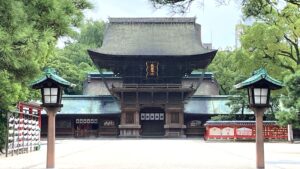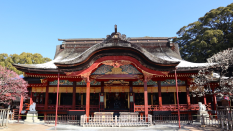Komaki and Nagakute Battlefield, Ieyasu's Strategy Toward Victory
Tokugawa Ieyasu (1543-16161, 徳川家康) laid the foundation for the 260-year Edo period (1603-1868) after a lifetime of numerous battles. His victory at the Battle of Komaki and Nagakute was later celebrated in the words of historian Rai Sanyo:
"Ieyasu's power as a ruler of Japan was not the victory of the Siege of Osaka or the Battle of Sekigahara, but the victory of the Battle of Komaki and Nagakute."
This battle, fought in 1584 when Ieyasu was 43 years old, marked the only large-scale conflict between Ieyasu and Toyotomi Hideyoshi (1537-1598, 豊臣秀吉), who was subjugating the warlords with his powerful forces across the country. Toyotomi's troops numbered 100,000 (or some say 60,000) at Inuyama Castle - Ieyasu's troops with only 17,000 men at Komakiyama Castle - Ieyasu’s tactical brilliance and the bravery of his retainers led to a significant victory. How did Ieyasu triumph? Let's explore the key factors behind his success.
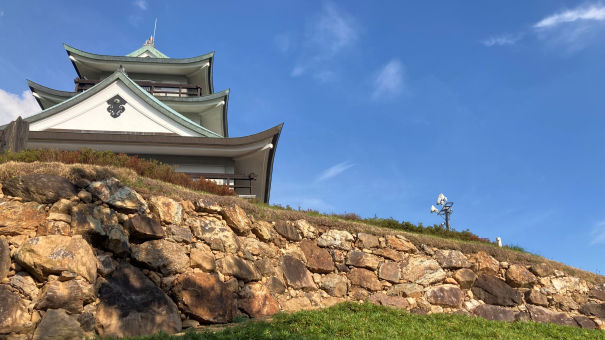
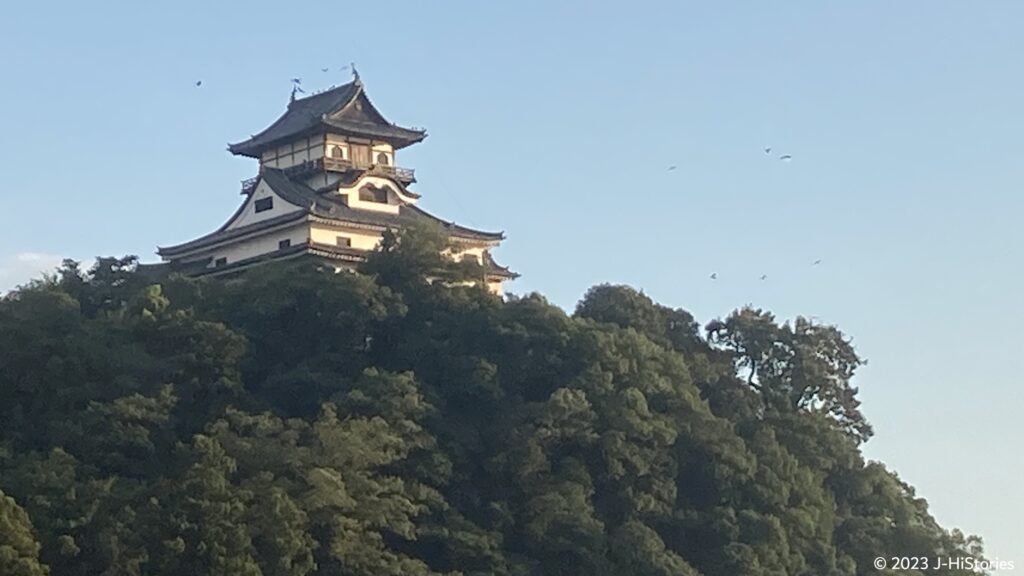
The Oda Family Succession Dispute Erupts and Ieyasu Backs Oda Nobukatsu
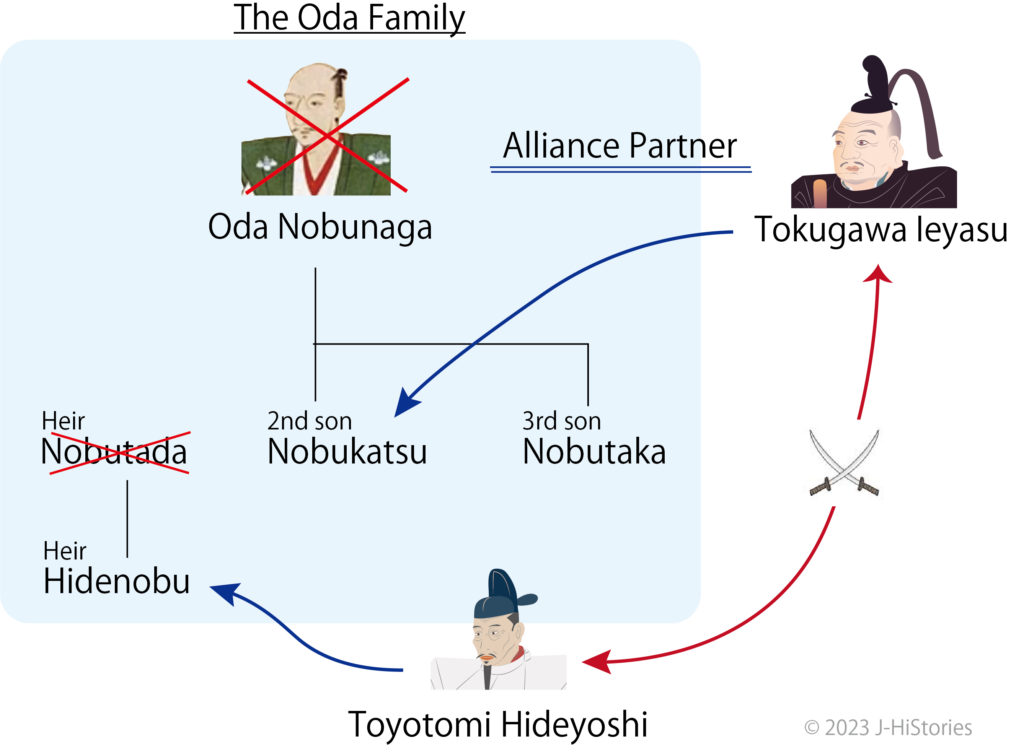
In 1582, during the Honnoji incident, Oda Nobunaga (1534-1582, 織田信長) and his heir, Nobutada (age 29), both died, and the only remaining Nobutada heir was Nobunaga's eldest grandson, Nobuhide (age 3). Due to Nobuhide’s very young age, a fierce succession struggle broke out between Nobunaga's second son, Nobukatsu, his third son Nobutaka, and his vassal, Toyotomi Hideyoshi. Ultimately, Toyotomi Hideyoshi emerged victorious because he defeated the traitor Akechi Mitsuhide, who had murdered his lord. By backing young Nobuhide as Oda's heir, Hideyoshi gradually consolidated power in his own hands and expanded his influence. Sensing his position at risk, Nobukatsu sought aid from Tokugawa Ieyasu. Respecting the alliance he had forged with Oda Nobunaga, Ieyasu rose to Nobukatsu's aid, erupting the Battle of Komaki and Nagakute.
Ieyasu Wins a Great Victory Over Hideyoshi
Hideyoshi seized Inuyama Castle, a strategic fortress held by Nobukatsu in the strategic Owari domain (Aichi Pref.), while Ieyasu entered Komakiyama Castle in opposition. The two armies faced each other, separated only 2 km. During the standoff, Hideyoshi decided to strike at Okazaki Castle, Ieyasu's main stronghold, leading to Hideyoshi's defeat and Ieyasu's victory. Let's examine the timeline of the battle.
April in 1584
| April 6th | Hideyoshi's forces moved to Gakuden Castle, south of Inuyama Castle. To avoid a confrontation with Ieyasu, Hideyoshi decided to attack Ieyasu's Okazaki Castle, where he was absent. They began their march quietly, employing Nakairi Tactics*. The army was divided into four units: - Vanguard(First Unit): 6,000 men under Ikeda Tsuneoki - Second Unit: 3,000 men under Mori Nagayoshi - Third Unit: 3,000 men under Hori Hidemasa - Rear Guard (Fourth Unit): 8,000 men under Miyoshi Hideji (age 17) | |
| April 8th Night | Ieyasu, not one to miss the movements of Hideyoshi's army, split the Tokugawa forces into two. Unnoticed by Hideyoshi, one pursuit force headed south from Komakiyama Castle towards Okazaki. Meanwhile, Ieyasu's main force circled to the east. | |
| April 9th Morning | The vanguard of Hideyoshi's army, led by Ikeda Tsuneoki, attacked and captured Iwasaki Castle from the Tokugawa. However, Hideyoshi’s read guard (the fourth unit), commanded by Miyoshi Hidetsugu, was attacked from the side by the pursuing Tokugawa Forces under Sakakibara Yasumasa and was destroyed. (The Battle of Hakusanrin) | |
| April 9th Early Morning | Hideyoshi's 3rd unit, led by Hori Hidemasa, countercharged the Tokugawa pursuers with a volley of musket fire. (The Battle of Hinokigane) However, seeing Ieyasu’s golden fan banner approaching with his main force, they noticed that the war situation was worsening and began retreating. | |
| April 9th Morning | Upon hearing the news of the defeat at Hakusanrin, the first and second units of Hideyoshi's army (Ikeda Tsuneoki and Mori Nagayoshi) began to retreat. At Nagakute, the Tokugawa army, which had already completed its formation, intercepted and defeated Ikeda Tsuneoki and Mori Nagayoshi (The Battle of Nagakute). | |
| April 9th Evening | Hideyoshi's main army withdrew. | |
| April 9th Night | Ieyasu's forces returned to Komakiyama Castle | |
| April 10th | Hideyoshi's forces returned to Gakuden Castle. Once again, both armies became locked in a stalemate. |
*Nakairi Tactics: A strategy of avoiding the enemy's front line, making a detour, and breaking through the enemy's weak rear guard by surprise, often leading to the collapse of the entire enemy force.
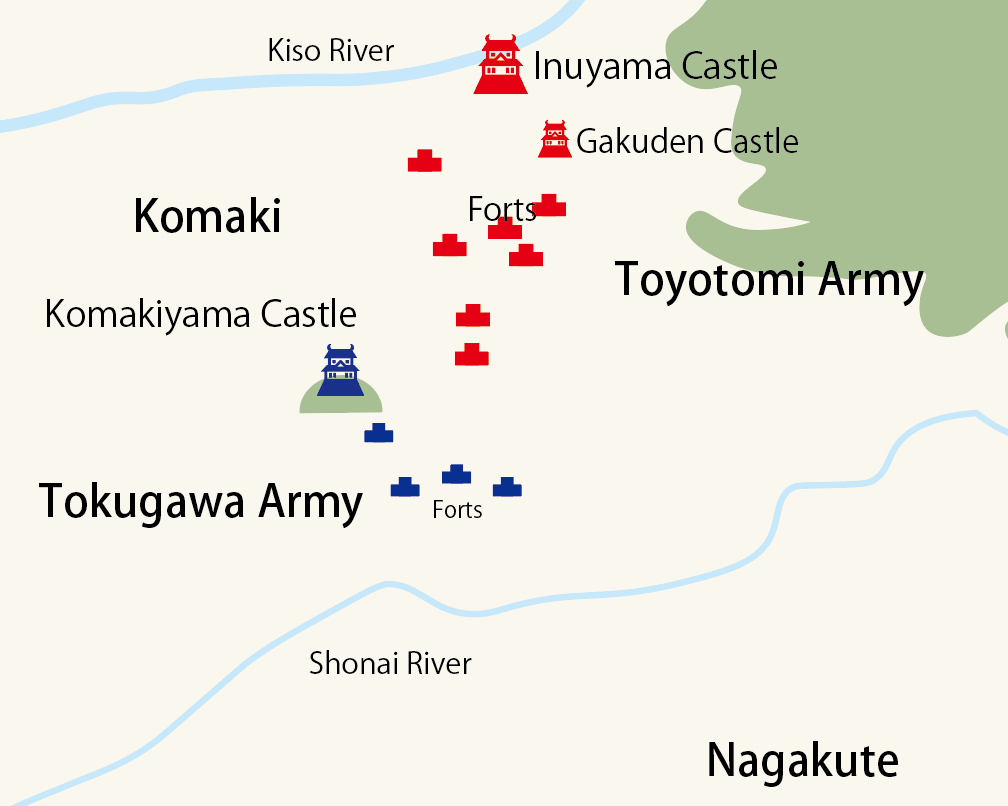
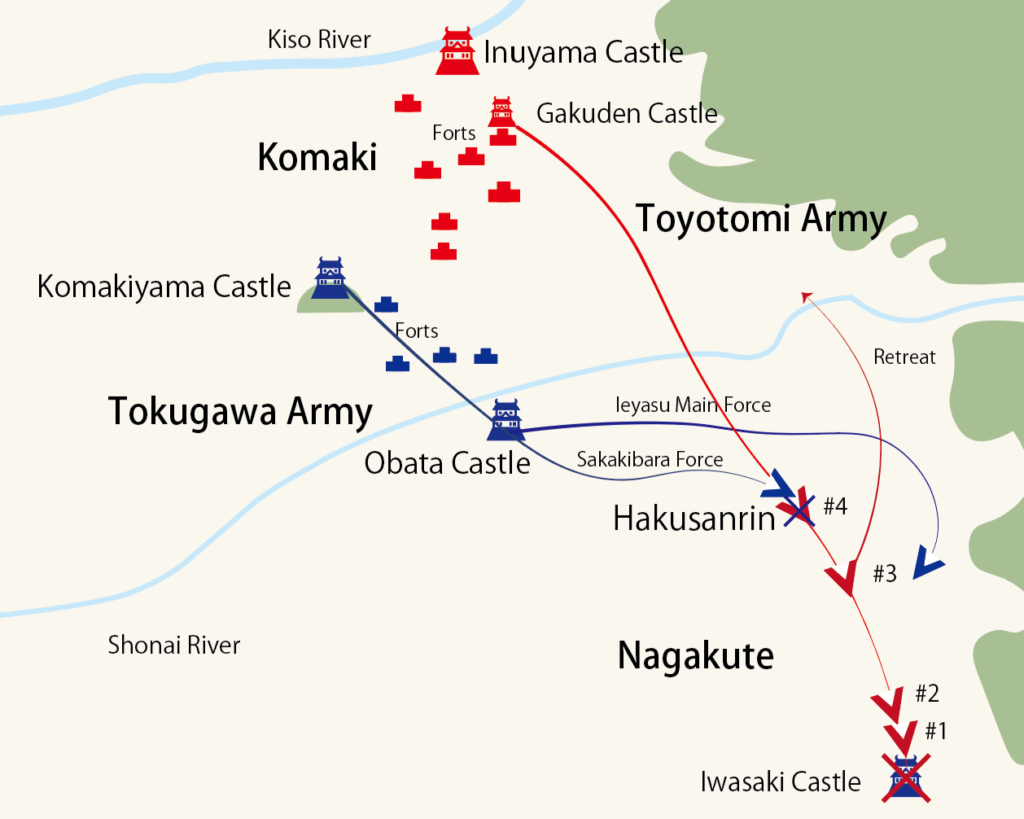
Ieyasu Force Attacked Hideyoshi's Unit 4
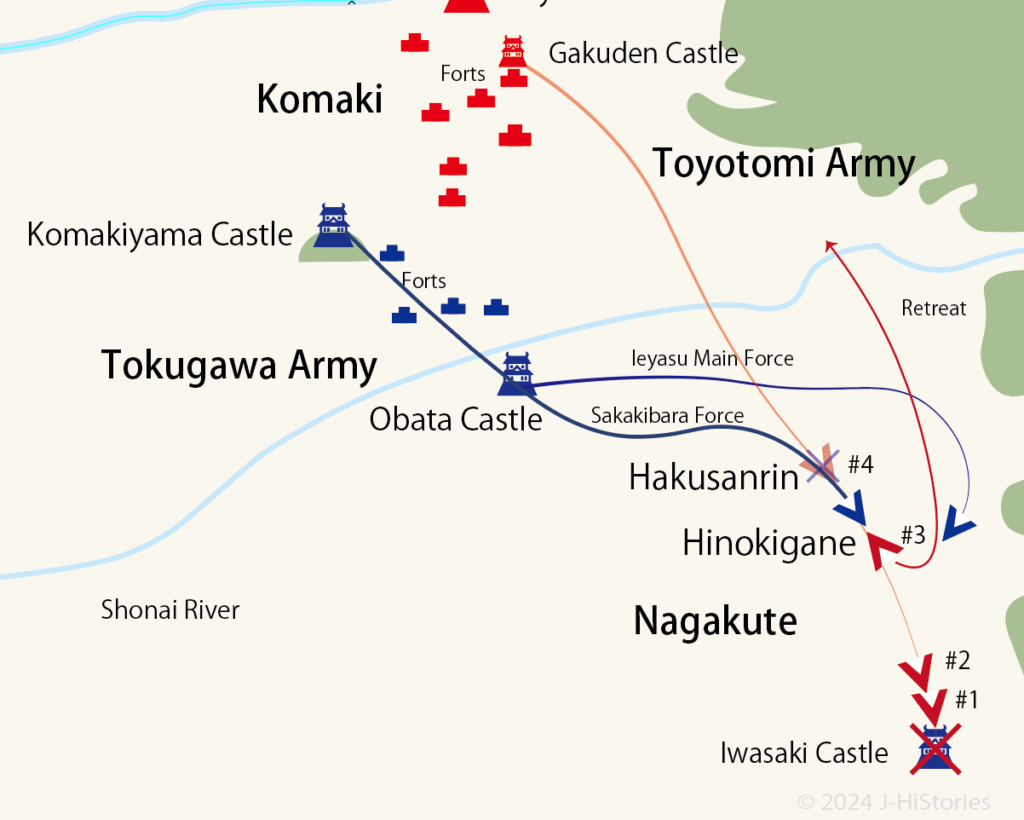
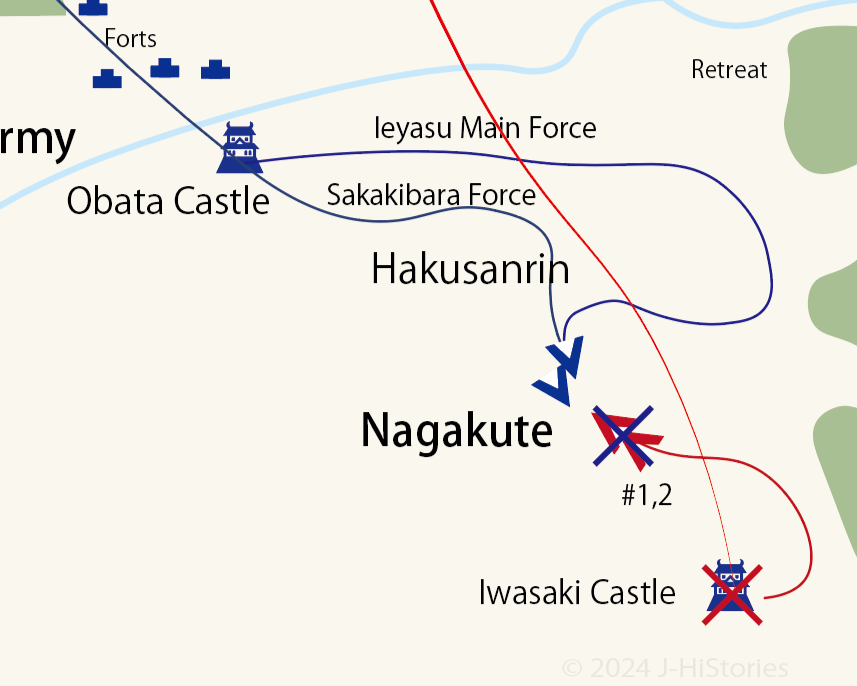
Ieyasu Makes Peace with Hideyoshi, But the Crisis Persists
In November, Nobukatsu made peace with Hideyoshi. Following Nobukatsu's suggestion, Ieyasu also agreed to make peace with Hideyoshi. As a sign of goodwill, Ieyasu sent his second son to be Hideyoshi’s adopted son, marking the end of the Battle of Komaki and Nagakute. Although this conflict was rooted in the Oda family succession dispute, Ieyasu emerged victorious on the battlefield, demonstrating his military strength and solidifying his reputation among warlords across Japan. This was a significant moment for Ieyasu. However, Hideyoshi did not give up on defeating Ieyasu. He stockpiled supplies for a 150,000-strong troop to attack Ieyasu. Hideyoshi also sent a letter to Sanada Masayuki, the lord of Ueda Castle in Shinano Province, and was keeping an eye on Ieyasu, informing him to attack Ieyasu. Ieyasu’s situation became even more precarious when Ishikawa Kazumasa, one of his most trusted vassals, defected to Hideyoshi’s side. This betrayal meant that all the Tokugawa’s military secrets were now known to Hideyoshi, and Ieyasu was forced to reform his military system.
Ieyasu’s Good Fortune
On November 29th, 1586 (January 18th, 1586, by the Gregorian calendar), the Tensho Great Earthquake struck, with a magnitude of 8 and a maximum seismic intensity of 6. Hideyoshi's territory was severely damaged, while Ieyasu's territory was only lightly affected with an intensity of 4. Although Ieyasu had won the Battle of Komaki and Nagakute, without this natural disaster, the Tokugawa clan might have been destroyed by Hideyoshi's full-scale attack. At that time, Ieyasu likely felt a deep sense of being protected by divine forces.
Throughout his life, Ieyasu often found himself in perilous situations, from his defeat at the Battle of Okehazama at the age of 19 to his return to his main Okazaki Castle after years of being held hostage, and the narrow escape during the Iga Crossing with only 34 men after the Honnoji Incident. While his retainers undoubtedly played a critical role in saving his life on numerous occasions, Ieyasu must have also felt that luck was on his side. This sense of fortune likely strengthened his belief that his destiny was to bring about peace in Japan.
Ieyasu's Formula for Victory
Part 1: Fortify the Battlefield, Learned from the Battle of Nagashino
Seeing the effectiveness of the horse-proof fences used by Oda Nobunaga at the Battle of Nagashino, Ieyasu adopted similar fences during the Battle of Komaki and Nagakute. Ieyasu’s forces dug trenches, built earthworks, erected horse-proof fences, and built four forts - Kanishimizu, Hokugaiyama, Utazu, and Dengaku - east of Komakiyama Castle, creating a solid defensive position. In response, Hideyoshi constructed seven forts to the south of Gakuden Castle, near Inuyama Castle, and facing Ieyasu’s defending Komakiyama Castle. The forts and horse-proof fences meant that neither side could move without warning, and a stalemate ensued in which "the first to make a move would lose.” To make his command of 100,000 men more moral, and to break the stalemate, Hideyoshi decided to adopt a “Nakairi strategy,” aiming to avoid a direct frontal attack. However, this move was the first step that led to the victory of the Tokugawa forces, who excelled in open-field warfare.
Part 2: Applying Sun Tzu's Art of War
To overcome a larger force, Ieyasu followed key principles from Sun Tzu’s Art of War. (1) defeat an enemy individually, (2) strike without losing momentum and know when to retreat. Ieyasu’s tactics reflected these strategies accordingly.
(1) Defeat the Enemy Individually
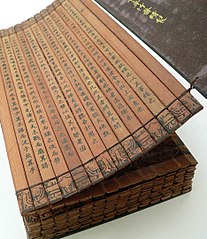
(CC Attribution 2.0)
Hideyoshi's Nakairi force consisted of 20,000 men, while Ieyasu commanded 13,000 men. Ieyasu recognized and approached the inexperienced rear guard, the Fourth Unit, led by the 17-year-old Miyoshi Hidetsugu, as a weakness. Ieyasu's strategy was to isolate and destroy the enemy units one by one. One of Ieyasu's trusted generals, Sakakibara Yasumasa, known for his leadership, caught up with Miyoshi Hideyoshi's 4th unit in the Hakusan Forest. He initiated an attack with a volley of shots, and when the volley ended, the brave Mikawa warriors under his command charged in and destroyed them.
Seeing the banner of Ieyasu's main force approaching, Hideyoshi's 3rd unit, commanded by Hori Hidemasa, retreated to Gakuden Castle. As a result, the first unit. Led by Ikeda Tsuneoki(Oda Nobunaga's foster brother), the second unit, led by Mori Nagayoshi (Tsuneoki's nephew), found themselves cut off from Hideyoshi's main force at Gakuden Castle. With no choice but to face the Tokugawa army head-on, they fought Ieyasu's forces at the Battle of Nagakute and were defeated.
Sun Tzu's principle: Even if you are outnumbered, if you have enough troops to defeat a single enemy unit, you can isolate and defeat them individually.
(2) Retreat When You Retreat
Upon learning that both Ikeda Tsuneoki and Mori Nagayoshi had been killed in battle, Hideyoshi began to rethink his strategy and realized that the real commander was not Ieyasu, but Nobukatsu. Hideyoshi shifted his focus to attacking Nobukatsu's castles, effectively turning the tide of the conflict in his favor. Recognizing the shift in momentum, Ieyasu wisely accepted the peace treaty, although Ieyasu secured a significant victory at the Battle of Komaki and Nagakute. He did not fight to the bitter end and waited for a more favorable opportunity, rather than risking a reckless engagement that could lead to the destruction of his forces.
Sun Tzu’s principle: Avoid the enemy's strengths and attack his weaknesses. Know retreat when you retreat. A good general avoids fighting when the enemy is in high spirits and strikes when his morale is low.
Part 3: Local Battles Within the Overall Strategy
Around the time of the Battle of Komaki and Nagakute, Ieyasu began to form an anti-Toyotomi alliance with Chosokabe Motochika of Shikoku, Sassa Narimasa of Etchu (Niigata), and more. Ieyasu also raised an army from the Negoro, Saika, and Kogawa temples in Kii. This force launched a campaign to threaten the Izumi Kishiwada castle of the Hideyoshi forces. This alliance was successful in dispersing Toyotomi's large army. In response, Hideyoshi also used Satake Yoshishigein the east, Mori Terumoto in the Chugoku region, Uesugi Kagekatsu in Echigo (Niigata), and Sengoku Hidehisa in Awaji to create an even greater encirclement of the Tokugawa. In addition, Kii's monks' attack delayed Hideyoshi's arrival in Owari by two or three days, giving Ieyasu valuable time to strengthen his fortifications and prepare for the coming battle. Through these calculated local engagements, Ieyasu won a great victory at the Battle of Komaki and Nagakute, and solidified his presence as a warlord across the country. This laid the groundwork for his eventual triumph at the decisive Battle of Sekigahara in 1600, where he would face off against Toyotomi loyalist Ishida Mitsunari.
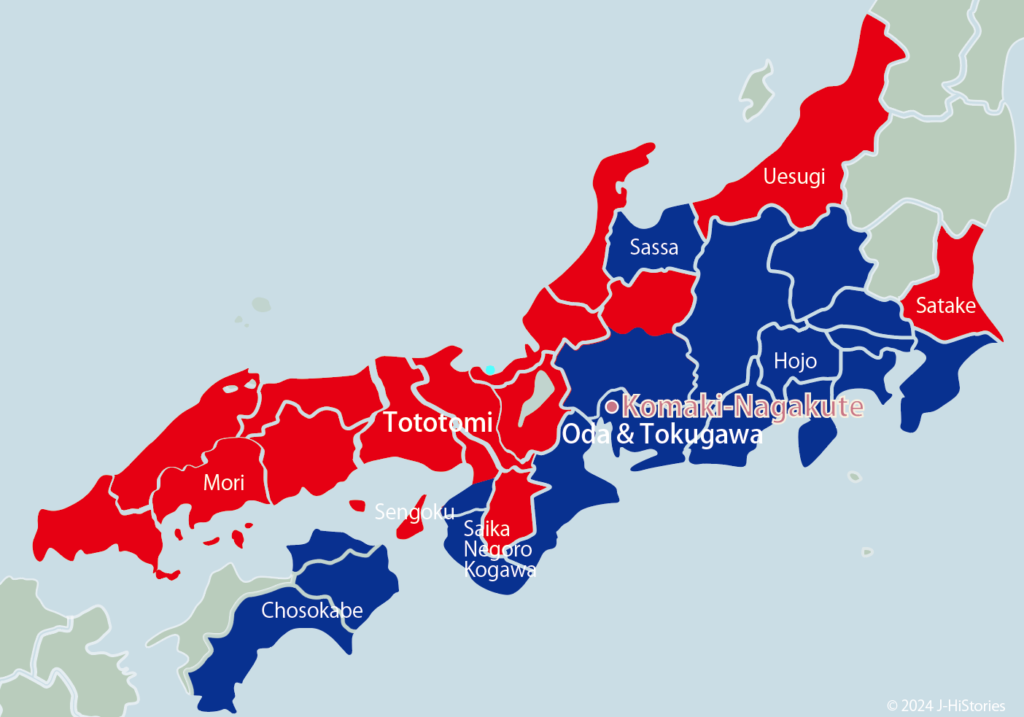
Sun Tzu: Battles should be fought within the framework of an overall strategy. Battles are not just acts of fighting, but the key elements that determine victory or defeat are planning and preparation. By establishing a comprehensive strategy, one can effectively control the situation of the battle and create favorable conditions for victory.
Recommendations to visit
Komakiyama Castle
- A 45 min from Meitetsu Nagoya Bus Center to Komaki City on Meitetsu Express bus, bound for "Tokadai New Town/Meiji Village", a 1 min walk.
Inuyma Castle
- A 30 min from Meitetsu Nagoya Station to Inuyama station (West Exit) on Meitetsu Inuyama Line. A 15-minute walk through the castle town.
Nagakute Ancient Battlefield Memorial Park
- A 28 min from Nagoya Station to Fujigaoka Station on Nagoya City Subway. Change to Linimo. A 3-minute walk from Linimo (Tobu Kyuryo Line) Nagakute Kosenjo Station
Note: Nagakute Battlefield Park, Under reconstruction. Open in FY2026

